Uneven polishing, extra heat buildup, and damage to the composite material are the common problems every dentist faces. All these problems emerge due to using low-quality composite polishing burs. A cheap bur is hard for you to achieve a natural finish on the restorations.
As a result, patients may not be happy with the outcome, and the dentist’s reputation could be affected. Poor-quality burs also wear out faster, meaning dentists have to replace them more frequently. In this article, you will explore the benefits of quality composite burs, a key factor to consider before making a final purchase, and three manufacturers. So, keep reading to explore how to use composite polishing burs.
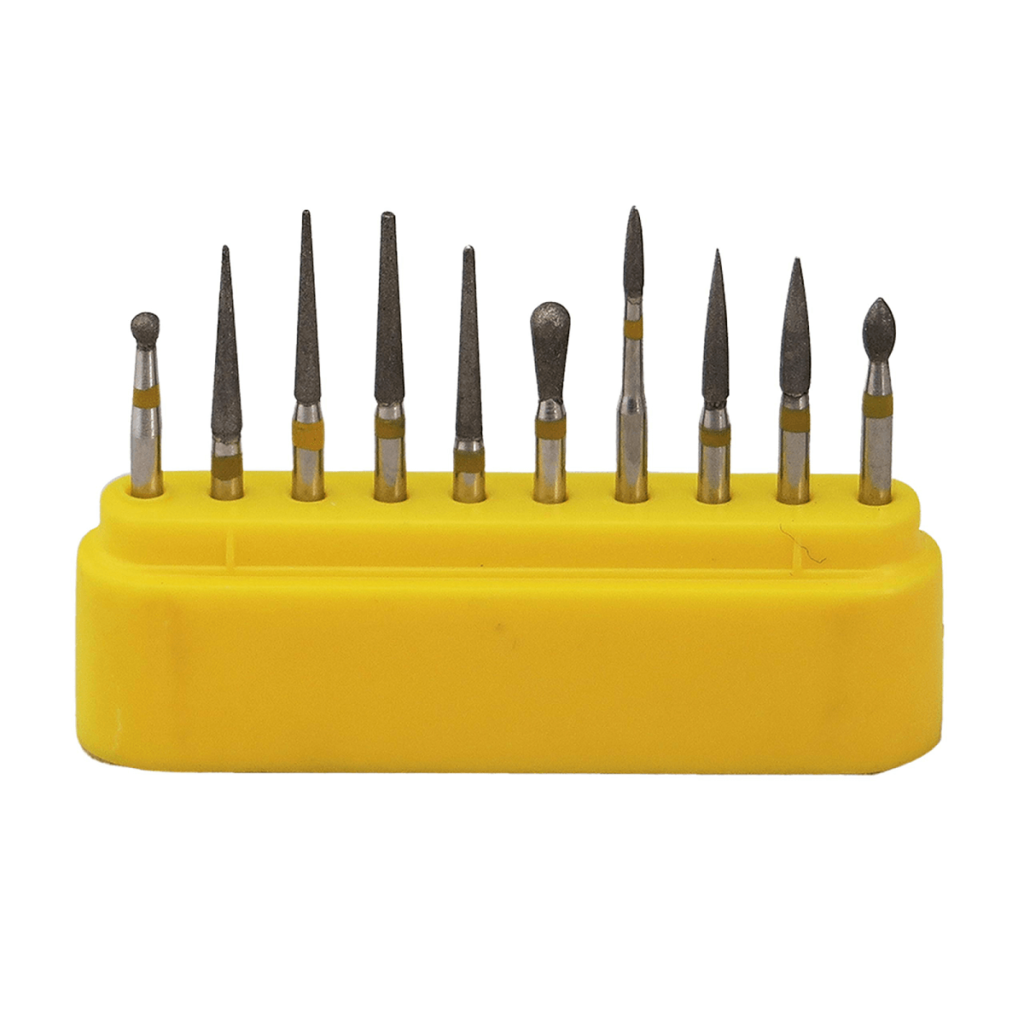
What Are Composite Polishing Burs?
These are special tools that are used in dental labs for different purposes. Mostly, dentists use these tools to polish and smooth composite materials like dental fillings. These burs are made from different materials ,such as diamond, silicone, or carbide. These burs come in various shapes and sizes. The main job of a composite polishing bur is to remove any rough spots. It gives the composite material a shiny, smooth finish. The working principle of polishing burs is simple.

Key Features of a Composite Polishing Bur
Here is a detailed overview of the key features or specifications of composite polishing burs.
1. Material Composition
Composite polishing burs are made from different materials. Diamond, silicone, or carbide are the common materials. Each material has unique properties, benefits, and drawbacks. Diamond base burs are the toughest and most durable. They are ideal for polishing and achieving a smooth finish.
Silicone burs are softer and less abrasive. At the same time, the carbide burs are durable and reliable. Carbide burs can also be used in conjunction with other burs to achieve the best results.
2. Shape and Size
The dental burs come in different shapes and sizes. Common shapes include cups, points, and discs. Cup-shaped burs are commonly used for polishing broad, flat surfaces. Point-shaped burs work well for precise detailing areas.
Dentists use disc-shaped burs to smooth curved surfaces. These burs are available in different sizes from small to large. You can use small burs to control and polish the tight area quickly.
3. Grit Levels
Composite polishing burs have different grit levels. The most common are coarse, medium, and fine grit. Coarse burs are used in the early stages of polishing to remove excess material. Medium grit burs are used to refine the surface. Fine grit burs are used for the final polishing stage. These burs smooth and shine the composite material.
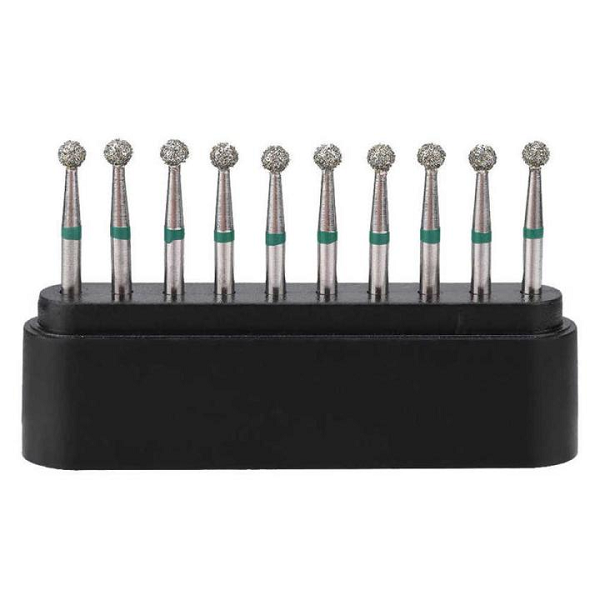
Common Problems Caused by Low-Quality Composite Polishing Burs
Sometimes, dentists use low-quality polishing burs that cause the following problems.
– Inconsistent Polishing
Low-quality composite polishing burs can cause uneven polishing on the restoration surface. When a bur is not properly made, it can leave rough spots or scratches. This inconsistency creates an uneven surface on the composite material. The final result will not look smooth or natural.
– Heat Buildup and Damage to Restorations
Another issue with low-quality burs is heat buildup. During polishing, friction generates heat. If the bur is not designed to handle the pressure, it can cause the composite material to overheat. Too much heat leads to discoloration, cracking, or softening. This makes the restoration weaker and less durable.
– Shorter Lifespan
Cheap dental burs wear out faster than higher-quality ones. These burs are often made from cheaper materials. As a result, they lose their effectiveness and need to be replaced more quickly. The more often a bur needs to be replaced, the more expensive it becomes for the dental practice.
– Slow Procedures and Decreased Efficiency
When a dentist uses low-quality burs, the polishing process becomes slower. Poor burs tend to be less effective at polishing. So, the dentist needs to spend more time working on each restoration. This slow progress can add up. Longer procedures lead to more chair time for each patient. Patients may feel frustrated by long appointments.
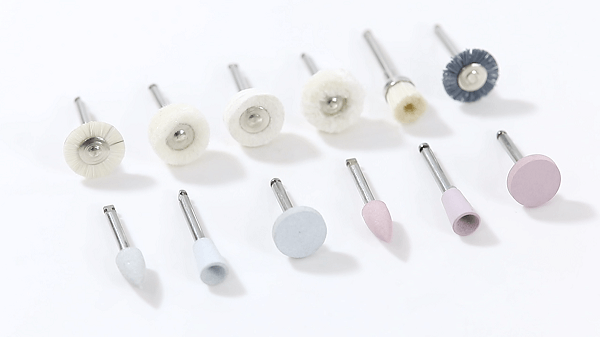
How to Choose the Right Composite Polishing Burs
To avoid these problems in the future, you need to invest in quality composite polishing burs. Here are a few factors you should keep in mind when choosing the bur.
– Durability and Reliability
Durability is the prime factor for you when you are choosing a composite burs. A high-quality bur should be able to withstand repeated use. Choose the bur that is made from durable material.
– Material Compatibility
It’s important for you to choose a bur that is compatible with the specific type of composite. Different composite materials may require different polishing burs. Diamond burs are often the best choice for harder composite materials. So, keep the material prosperity in mind when purchasing the bur.
– Heat Resistance
The polishing and grinding of dental material with a bur generates heat. As the bur spins, it generates friction, which leads to heat. Too much heat can discolor the composite material. A bur that has good heat resistance helps control this issue. Choose the bur that is resistant to heat.
– Cost
It’s important for you to choose a brand that is cost-effective for you. A cheaper burs may seem appealing. However, they wear down faster and provide inconsistent results. It’s important to balance cost with quality. Investing in quality burs can save you money in the long run.
Top 3 Suppliers of Composite Polishing Burs?
It’s important for you to buy dental equipment from a well-known manufacturer that provides cost-effective dental solutions.
1. Aidite
Aidite mainly focuses on providing high-quality dental products. The brand is famous for its focus on innovation. Their team is dedicated to providing reliable tools. Aidite grinding and polishing sets are made from durable materials. They are perfect for polishing composite restorations. Their burs are designed to provide smooth, consistent results. Their burs are available in various shapes and sizes. These burs are known for their heat resistance and excellent polishing abilities. Their focus on quality ensures that their burs last longer.

2. 3M ESPE
3M ESPE is a global leader in dental products. They provide a wide range of dental tools and materials. They are known for their high standards and innovative products. Their composite polishing burs are designed for both efficiency and quality. Their burs are available in various shapes, such as cups, points, and discs. You can choose one that accomplishes your dental needs. The brand mainly focuses on durability and reliability. Their products are ideal for dental professionals who value precision.
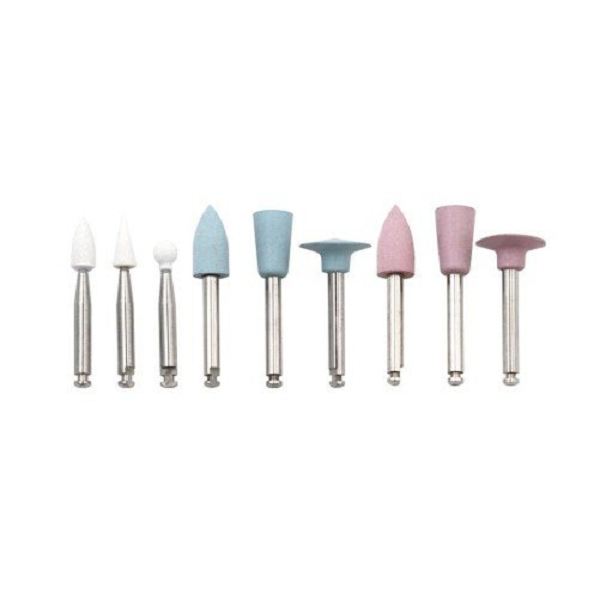
3. Komet USA
Komet USA is another top supplier in the dental industry. The brand is known for its high-quality and reliable products. They provide a wide range of dental tools, including composite polishing burs. Their burs are made from durable materials. It enables you to achieve a smooth, polished finish on composite restorations. Their burs come in various sizes and shapes. All these burs cater to different needs during the polishing process.
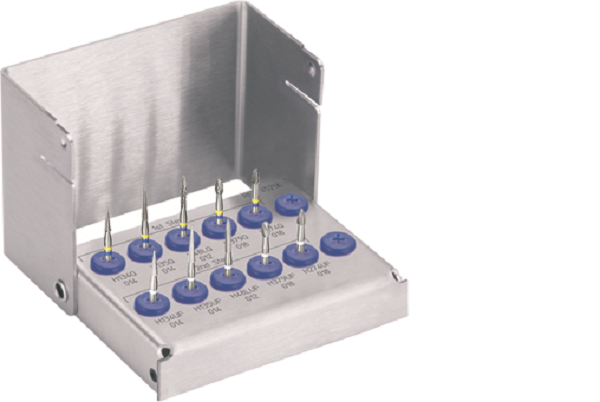
Frequently Asked Questions
What burs are used for polishing?
Dentists use different types of burs for polishing dental restorations. They use diamond, carbide, and silicone-based burs to make the surface of dental models smooth. All these burs are versatile and suitable for polishing hard material.
What burs are used for composite filling?
Dentists commonly use carbide burs to trim and finish macrofilled and hybrid composites. These burs are durable and suitable for cutting and trimming hard material. Furthermore, the coarse grinding tools are also used to cut and polish the microfilled composites.
What are carbide burs used for?
In dental labs, carbide burs are mostly used to prepare cavities, shape the bone, and remove old dental fillings. You can also use these burs to remove the enamel and polish the teeth surface. Furthermore, these burs are preferred to cut amalgam, dentin, and enamel.
Final Thoughts
To summarize, composite polishing burs are designed to grind and polish dental restorations. You can adjust the dental models, like crown, bridges, and veneer shapes, according to patient mouth needs. You can remove the rough spots and extra material on restorations quickly. However, it’s important for you to choose the right bur. Some dentists buy the cheap polishing burs due to their budget. This type of bur does not last and needs replacement. So, it’s important for you to choose the right, high-quality, and durable polishing bur.



